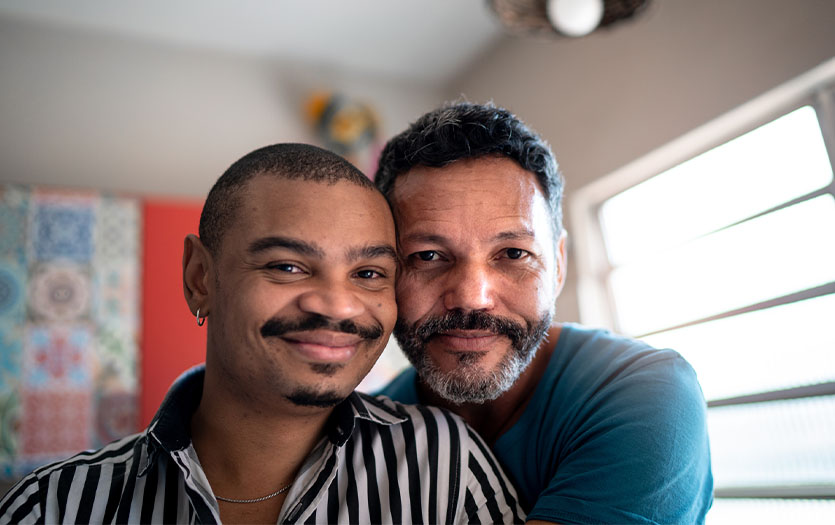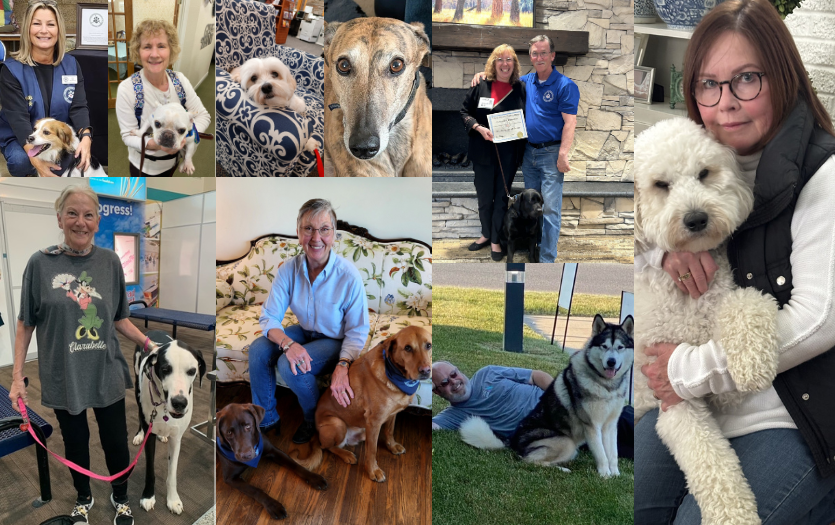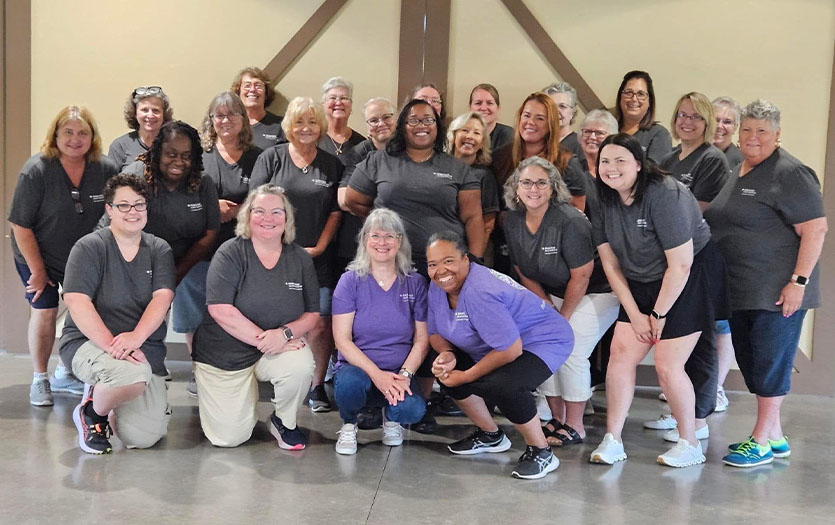
This post was written by Courtney Washington, PsyD, CSAYC, HSPP, Parkview Behavioral Health Institute.
June is Pride Month—an observance intended to highlight and celebrate the LGBTQ+ community. Pride was started as a social movement to push back against the marginalization and oppression that this community experiences. It began when a few brave humans stood up for their rights and the rights of other queer people like them.
In the 2020 census, 7.8% of Indiana residents identify as a member of the LGBT community. It should be noted this number is likely underreported as the census questionnaire only allowed for classification of lesbian, gay, bisexual or transgender, or did not reply. There are many more identifications outside of these narrow definitions.
A glossary of common LGBGTQ+ terms
First, it’s helpful to understand the terms used in regard to this population and how they intersect and overlap. The following definitions were taken from the Human Rights Campaign:
Ally | A term used to describe someone who is actively supportive of LGBTQ+ people. It encompasses straight and cisgender allies, as well as those within the LGBTQ+ community who support each other (e.g., a lesbian who is an ally to the bisexual community).
Asexual | Often called “ace” for short, asexual refers to a complete or partial lack of sexual attraction or lack of interest in sexual activity with others. Asexuality exists on a spectrum, and asexual people may experience no, little or conditional sexual attraction.
Biphobia | The fear and hatred of, or discomfort with, people who love and are sexually attracted to more than one gender.
Bisexual | A person emotionally, romantically or sexually attracted to more than one gender, though not necessarily simultaneously, in the same way or to the same degree. Sometimes used interchangeably with pansexual.
Genderqueer | Genderqueer people typically reject notions of static categories of gender and embrace a fluidity of gender identity and often, though not always, sexual orientation. People who identify as "genderqueer" may see themselves as being both male and female, neither male nor female or as falling completely outside these categories.
Homophobia | The fear and hatred of or discomfort with people who are attracted to members of the same sex.
Intersex | Intersex people are born with a variety of differences in their sex traits and reproductive anatomy. There is a wide variety of difference among intersex variations, including differences in genitalia, chromosomes, gonads, internal sex organs, hormone production, hormone response, and/or secondary sex traits.
Gender binary | A system in which gender is constructed into two strict categories of male or female. Gender identity is expected to align with the sex assigned at birth and gender expressions and roles fit traditional expectations.
Gender dysphoria | Clinically significant distress caused when a person's assigned birth gender is not the same as the one with which they identify.
Gender-expansive | A person with a wider, more flexible range of gender identity and/or expression than typically associated with the binary gender system. Often used as an umbrella term when referring to young people still exploring the possibilities of their gender expression and/or gender identity.
Gender expression | External appearance of one's gender identity, usually expressed through behavior, clothing, body characteristics or voice, and which may or may not conform to socially defined behaviors and characteristics typically associated with being either masculine or feminine.
Gender-fluid | A person who does not identify with a single fixed gender or has a fluid or unfixed gender identity.
Lesbian | A woman who is emotionally, romantically or sexually attracted to other women. Women and non-binary people may use this term to describe themselves.
LGBTQ+ | An acronym for “lesbian, gay, bisexual, transgender and queer” with a "+" sign to recognize the limitless sexual orientations and gender identities used by members of our community.
Non-binary | An adjective describing a person who does not identify exclusively as a man or a woman. Non-binary people may identify as being both a man and a woman, somewhere in between, or as falling completely outside these categories. While many also identify as transgender, not all non-binary people do. Non-binary can also be used as an umbrella term encompassing identities such as agender, bigender, genderqueer or gender-fluid.
Outing | Exposing someone’s lesbian, gay, bisexual, transgender or gender non-binary identity to others without their permission. Outing someone can have serious repercussions on employment, economic stability, personal safety or religious or family situations.
Pansexual | Describes someone who has the potential for emotional, romantic or sexual attraction to people of any gender though not necessarily simultaneously, in the same way or to the same degree. Sometimes used interchangeably with bisexual.
Queer | A term people often use to express a spectrum of identities and orientations that are counter to the mainstream. Queer is often used as a catch-all to include many people, including those who do not identify as exclusively straight and/or folks who have non-binary or gender-expansive identities. This term was previously used as a slur but has been reclaimed by many parts of the LGBTQ+ movement.
Questioning | A term used to describe people who are in the process of exploring their sexual orientation or gender identity.
Same-gender loving | A term some prefer to use instead of lesbian, gay or bisexual to express attraction to and love of people of the same gender.
Sex assigned at birth | The sex, male, female or intersex, that a doctor or midwife uses to describe a child at birth based on their external anatomy.
Sexual orientation | An inherent or immutable enduring emotional, romantic or sexual attraction to other people. Note: an individual’s sexual orientation is independent of their gender identity.
Transgender | An umbrella term for people whose gender identity and/or expression is different from cultural expectations based on the sex they were assigned at birth. Being transgender does not imply any specific sexual orientation. Therefore, transgender people may identify as straight, gay, lesbian, bisexual, etc.
Transitioning | A series of processes that some transgender people may undergo in order to live more fully as their true gender. This typically includes social transition, such as changing name and pronouns, medical transition, which may include hormone therapy or gender affirming surgeries, and legal transition, which may include changing legal name and sex on government identity documents. Transgender people may choose to undergo some, all or none of these processes.
Aspects of one’s identity
One challenge people face in understanding this community is the intersection of biological sex, gender, gender identity or expression, and sexual orientation. While these aspects of our identity intersect often, they are distinct parts of our identity and do not always align completely.
Biological sex refers to what chromosomes we have XX= female; XY= male; other combinations of XY= intersex. Gender on the other hand, is a social construct that tells people how to behave based on assumed sex. Our assumed sex is often assigned at birth based on external genitalia, but this is not always accurate because it does not look at our chromosomes. Gender is the social narrative and belief that men and women should behave in certain socially acceptable ways. Think boys like blue, dump trucks and sports, and girls like pink, dolls and make-up. Gender expectations are learned and outlined based on societal expectations. Our gender identity then is determined based on if our biological sex and gender align (cis-gender); or do not align (transgender). Gender expression refers to how one communicates their gender identity to others through clothes and other forms of expression. Finally, sexual orientation is related to sexual attraction, romantic love, and connection to others.
LGBTQ+ mental health
Throughout history, the LGBTQ+ community has experienced significant oppression due to their identities, which leads to great impacts on these humans’ mental health.
According to the Substance Abuse Mental Health Services Administration (SAMHSA), 2021-2022 Lesbian Gay and Bisexual Behavioral Health Survey, sexual minority adults were more likely to have had a mental health difficulty and/or substance use disorder in the past year. They are also more likely to struggle with thoughts of suicide than their heterosexual counterparts. Bisexual females were five times more likely to have made a suicide plan in the past year when compared to their heterosexual peers. Lesbian females were four times more like to have made a plan for suicide. Bisexual and gay men were also more likely to make a plan for suicide in the past year when compared to their heterosexual peers. The same is true for sexual minorities when it comes to attempting suicide.
Regarding LGBTQ+ youth, 45% seriously considered suicide and 14% attempted suicide. This number increases when youth have other minority statuses. 73% of LGBTQ+ youth reported experiencing anxiety and 58% reported symptoms of depression.
It is important to note, that these individuals are not more likely to experience these mental health challenges because they are LGBTQ+, but rather mental health challenges develop due to not feeling accepted and safe to be themselves in society. We know this as surveys suggest that support environments decrease mental health challenges. According to the Trevor Project, youth who feel high social support from their family attempted suicide at less than half the rate of their peers who felt low or moderate support. The same is true for youth who experience their school as affirming to their LGBTQ+ identity.
The coming out process
The coming out process is a major psychological decision ?that can be one of the biggest choices in a queer person’s life. This is ?due to both perceived and real negative consequences?. Due to our assumption and bias as a culture that all people are heterosexual, LGBTQ+ people often have to come out multiple times and in multiple places. This can be exhaustive and often decisions about this are rooted in the felt sense of safety in different environments. LGBTQ+ people are less likely to disclose if family is “very religious” according to research. The parent child relationship quality prior to disclosure is important, as the more secure the attachment the more likely people are to disclose their identity. ?Parental support for sexual orientation is directly associated with self-acceptance?. Finally, parents and loved ones often go through a natural grieving process when their family members come out. Parents undoubtedly project and plan their children’s lives when they are born. The coming out and disclosure of an LGBTQ+ status can alter these plans. Grieving this is natural and expected. It is important to express this grief in a manner that does not put additional stress on the LGBTQ+ person.
How to be an ally
- Create safe spaces—this can be done through verbal and/ or visual cues
- Engage in a dialogue?
- Ask open ended questions?
- ·Don’t disclose more than is asked (with kids)?
- Answer questions in the most honest and developmentally appropriate way possible?
- Normalize?
- Don’t pressure to label themselves?
- Remember these issues can be fluid for many people ?
- ·Know your biases?
- Be supportive, validating, and non-judgmental
Hopefully, understanding this movement helps to best support our LGBTQ+ peers, colleagues, children and neighbors.
Resources
https://www.thetrevorproject.org/survey-2022/
https://www.samhsa.gov/data/sites/default/files/reports/rpt41899/2022_LGB_Brief_Final_06_07_23.pdf



